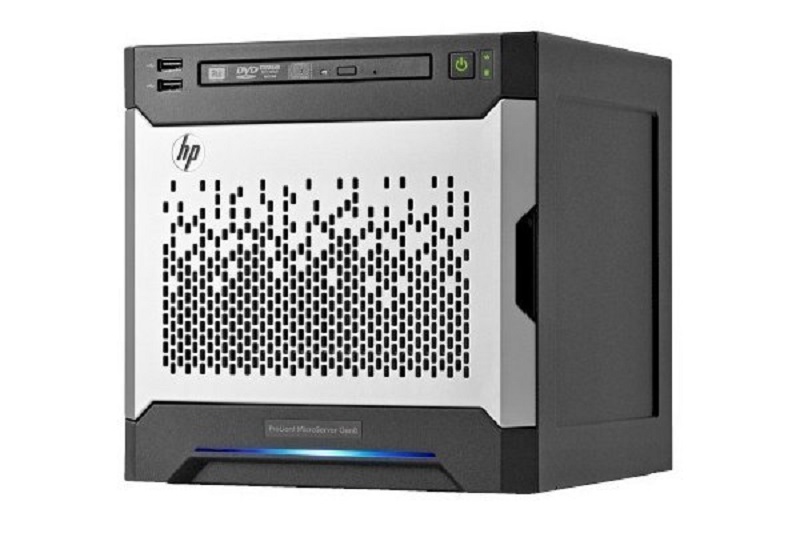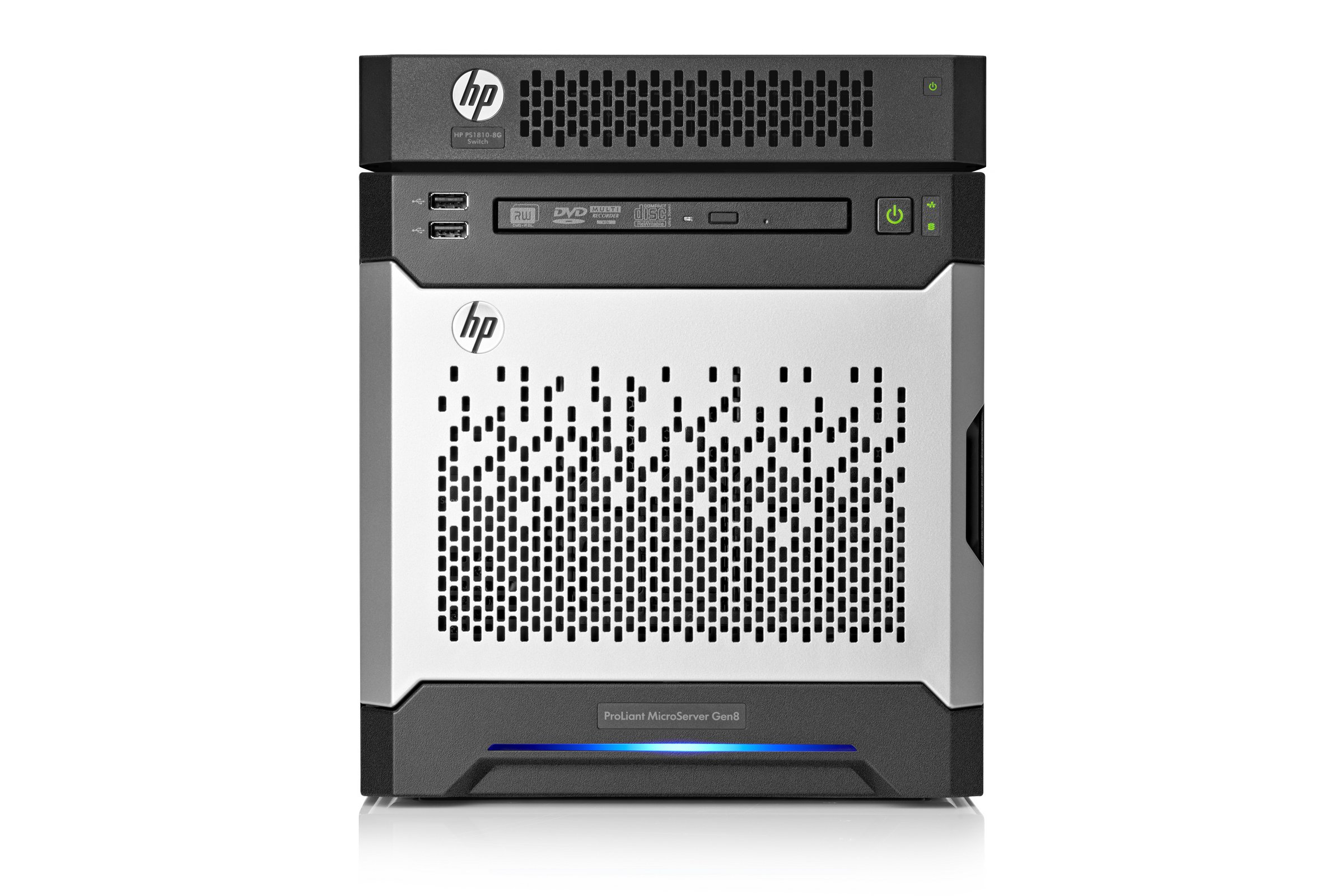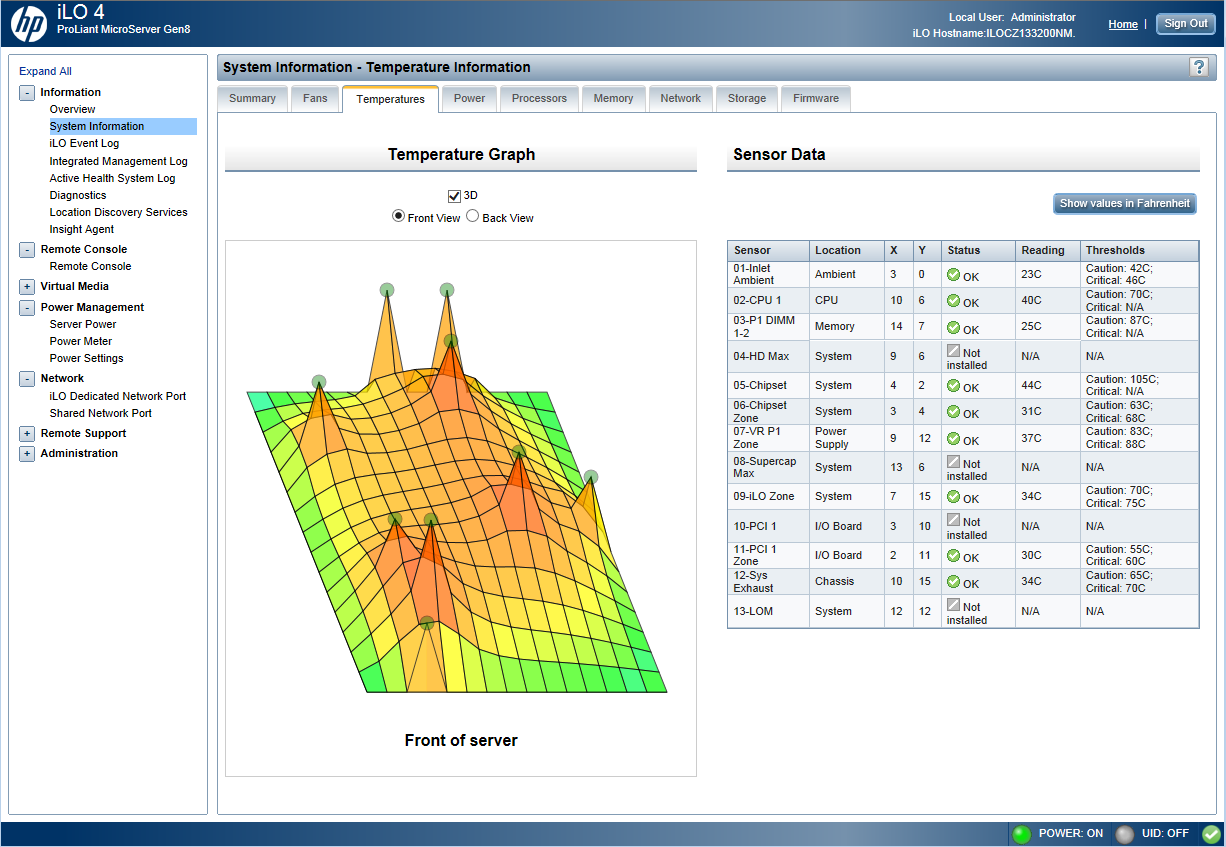HP ProLiant MicroServer Gen8 review
HP’s popular little MicroServer gets a complete Gen8 makeover and some quality remote management features.


A compact system well suited to a variety of tasks ranging from small business server to test platform. The MicroServer Gen8 is very good value, comes with classy remote management features and looks good on the desktop as well.
-
+
Compact and very well built, Good value, HP iLO4 remote management, Quiet
-
-
Cold-swap drive bays

Since its launch over two years ago, HP's MicroServer has gained quite a following. But, as we found out in our tests, it's not without its faults. Now, however, it has finally been given the Gen8 treatment, so in this review we bring you the lowdown on all that's new.
Aimed squarely at small offices and home based businesses looking for their first server, the MicroServer Gen8 is designed to be easy to set up and use. It's built to be shown off as well as HP offers it with a range of coloured bezel kits.
Prices start as low as 308 ex VAT and this gets you a dual-core 2.3GHz Celeron plus a 2GB stick of DDR3. If you want a bit more horsepower HP offers a version with a 2.5GHz Pentium G2020T which, at the time of publication,Ebuyeris selling for around 355 ex VAT.
For hard disks, you can purchase HP's NHP (non hot plug) SATA drives and our system was supplied with an optional 500GB HP 6G Midline drive. You can cut costs and use your own and HP advised us that this won't invalidate the warranty.

HP's optional 8-port PS1810-8G switch is designed to fit on top off or underneath the MicroServer Gen8.
RAID and build quality
The embedded Smart Array B120i chip supports mirrors, stripes and RAID-10 arrays but the four drive bays are cold-swap only. If you want hot-swap and RAID-5 you can add an optional Smart Array P222 SAS/SATA RAID card but for most this is overkill as the card costs as much as the server.
Sign up today and you will receive a free copy of our Future Focus 2025 report - the leading guidance on AI, cybersecurity and other IT challenges as per 700+ senior executives
Build quality is excellent and the Gen8 model remedies many of its predecessors' shortcomings. The metal and plastic front door can be locked from the inside and the four drive carriers behind it are much more solid.
The chassis has a light bar across the front for an at-a-glance system status indicator and internal access for upgrades is also improved. The entire chassis cover can be removed after releasing two thumbscrews and the MicroServer's innards are far less cluttered.
There's nothing in the way of the two DIMM slots on the right-hand side of the motherboard and the PCI-Express slot on the left side is equally unobstructed. You don't need a screwdriver for the latter either as a quick release clip keeps the card in place.

The MicroServer gets the same integrated iLO4 management chip as its big ProLiant brothers.
Dave is an IT consultant and freelance journalist specialising in hands-on reviews of computer networking products covering all market sectors from small businesses to enterprises. Founder of Binary Testing Ltd – the UK’s premier independent network testing laboratory - Dave has over 45 years of experience in the IT industry.
Dave has produced many thousands of in-depth business networking product reviews from his lab which have been reproduced globally. Writing for ITPro and its sister title, PC Pro, he covers all areas of business IT infrastructure, including servers, storage, network security, data protection, cloud, infrastructure and services.
-
 ‘1 engineer, 1 month, 1 million lines of code’: Microsoft wants to replace C and C++ code with Rust by 2030 – but a senior engineer insists the company has no plans on using AI to rewrite Windows source code
‘1 engineer, 1 month, 1 million lines of code’: Microsoft wants to replace C and C++ code with Rust by 2030 – but a senior engineer insists the company has no plans on using AI to rewrite Windows source codeNews Windows won’t be rewritten in Rust using AI, according to a senior Microsoft engineer, but the company still has bold plans for embracing the popular programming language
By Ross Kelly Published
-
 Google drops $4.75bn on data center and energy firm Intersect
Google drops $4.75bn on data center and energy firm IntersectNews The investment marks the latest move from Google to boost its infrastructure sustainability credentials
By Nicole Kobie Published
-
 OpenAI says prompt injection attacks are a serious threat for AI browsers – and it’s a problem that’s ‘unlikely to ever be fully solved'
OpenAI says prompt injection attacks are a serious threat for AI browsers – and it’s a problem that’s ‘unlikely to ever be fully solved'News OpenAI details efforts to protect ChatGPT Atlas against prompt injection attacks
By Nicole Kobie Published
